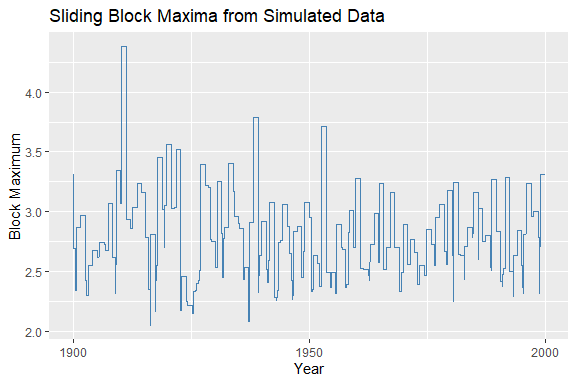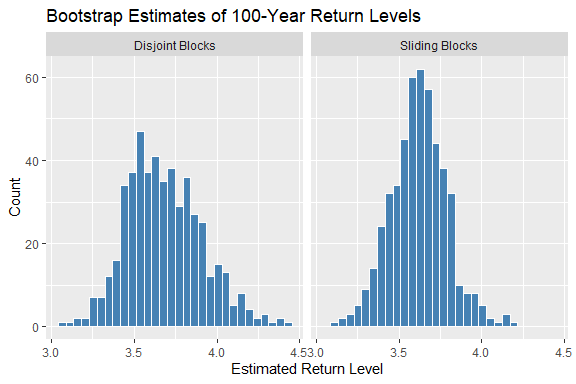




The hardware and bandwidth for this mirror is donated by METANET, the Webhosting and Full Service-Cloud Provider.
If you wish to report a bug, or if you are interested in having us mirror your free-software or open-source project, please feel free to contact us at mirror[@]metanet.ch.
The maxbootR package provides fast and
consistent bootstrap methods for block maxima, designed for
applications in extreme value statistics. Under the hood,
performance-critical parts are implemented in C++ via Rcpp, enabling
efficient computation even for long time series.
These methods are based on the first consistent bootstrap approach for block maxima as introduced in Bücher & Staud (2024+): Bootstrapping Estimators based on the Block Maxima Method..
You can install the development version of maxbootR from
GitHub with:
# install.packages("devtools")
devtools::install_github("torbenstaud/maxbootR")or from the official CRAN repository in R with:
install.packages("maxbootR")The following example demonstrates how to extract sliding block maxima from synthetic data.
library(ggplot2)
library(maxbootR)
library(dplyr)
# Generate 100 years of daily observations
set.seed(91)
x <- rnorm(100 * 365)
# Extract sliding block maxima with 1-year window
bms <- blockmax(xx = x, block_size = 365, type = "sb")
# Create time-indexed tibble for plotting
df <- tibble(
day = seq.Date(from = as.Date("1900-01-01"), by = "1 day", length.out = length(bms)),
block_max = bms
)
# Plot the block maxima time series
ggplot(df, aes(x = day, y = block_max)) +
geom_line(color = "steelblue") +
labs(
title = "Sliding Block Maxima from Simulated Data",
x = "Year",
y = "Block Maximum"
) 
Time series of block maxima from simulated normal data
We now use the maxbootr() function to bootstrap the
100-year return level of synthetic data, comparing the
disjoint vs. sliding block bootstrap methods.
# Set block size (e.g., summer days)
bsize <- 92
# Generate synthetic time series
set.seed(1)
y <- rnorm(100 * bsize)
# Bootstrap using disjoint blocks (+timing)
system.time(
bst.db <- maxbootr(xx = y, est = "rl", block_size = bsize, B = 500,
type ="db", annuity = 100)
)
#> User System verstrichen
#> 0.61 0.00 0.69
# Bootstrap using sliding blocks (+timing)
system.time(
bst.sb <- maxbootr(xx = y, est = "rl", block_size = bsize, B = 500,
type = "sb", annuity = 100)
)
#> User System verstrichen
#> 6.86 0.00 6.89
# Compare variance
var(bst.sb) / var(bst.db)
#> [,1]
#> [1,] 0.5502442The sliding block method typically results in narrower bootstrap distributions, reducing statistical uncertainty.

Histogram of return level bootstrap replicates
For a full tutorial with real-world case studies (finance & climate), check out the vignette included in the package.
The implemented disjoint and sliding block bootstrap methods are grounded in the following foundational works:
The block bootstrap methodology itself is based on:
I plan to further enhance maxbootR by:
Your ideas and contributions are welcome — feel free to open an issue or pull request on GitHub!
These binaries (installable software) and packages are in development.
They may not be fully stable and should be used with caution. We make no claims about them.